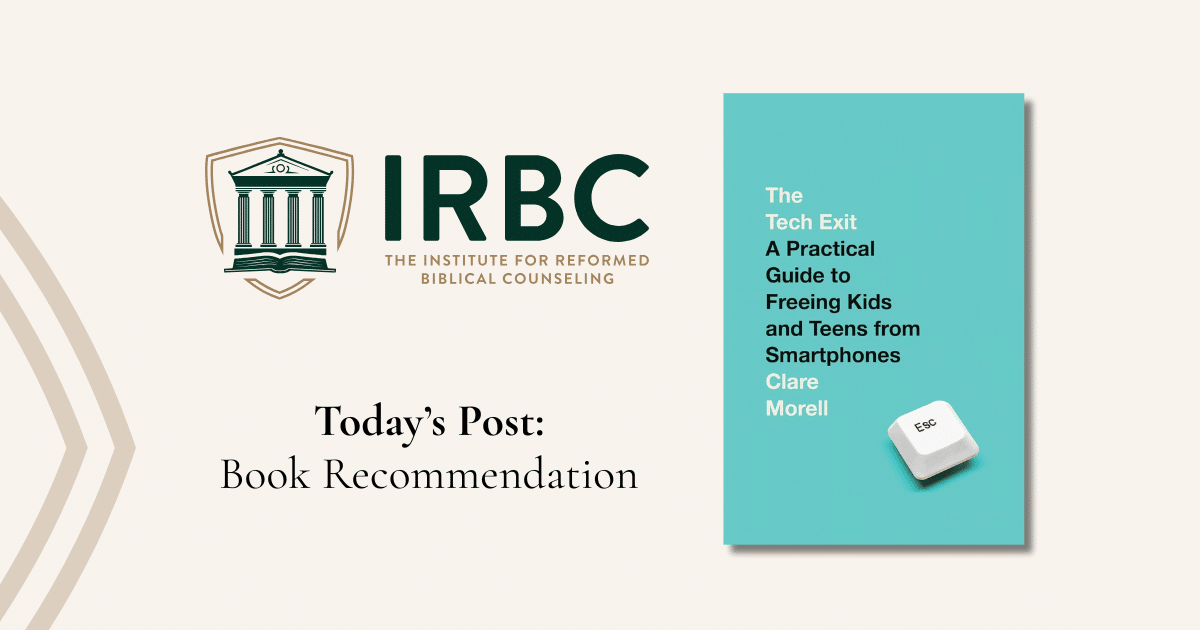In his book Indistractable, Nir Eyal offers the sobering prediction. “In the future,” Eyal argues, “there will be two kinds of people in the world: those who let their attention and lives be controlled and coerced by others and those who proudly call themselves ‘indistractable.’”1 While a shrewd plug for his own work, this statement reflects the technological changes of the twenty-first century and the incessant grip it has on our attention spans. Society at large is locked in a daily fight with technology for their attention, being bombarded constantly by notifications, screens, and digital information.
If this troubling picture defines a central challenge confronting adults, these realities are further exacerbated in our youth and children. We’ve all seen the scenario. Toddlers sitting quietly in a waiting room, playing on iPads. Families hunched over their smartphones in a restaurant booth. According to a recent survey, one-third of children today receive their own smartphone at the age of 10.2 Everyone knows the standard justifications for handing these technologies to tweens and younger.
“That is how kids socialize these days.”
“Their team/school/program requires a phone for messages and updates.”
“How will I contact my child if I need them without a smartphone?”
“My kids will be awkward and have no friends.”
“If they don’t have a phone now, they will binge on these technologies when they are finally on their own.”
The past several years have seen parents offering their children as guinea pigs for what may amount to the greatest social and developmental experiment in the history of the human race—life from womb to tomb with YouTube. The early returns on this grand experiment are bleak concerning the social, developmental, and spiritual health of our youth. Eyal’s prediction above can be rephrased as follows: future generations will be divided into two groups—those whose children have learned self-control with technology, and those who have not.
But Clare Morell, in her latest work, is not merely proposing “self-control” or imposing parental limits on children’s use of technology. Rather, she is counseling families to actually opt out of these technologies entirely—to Tech Exit. This argument is the logical conclusion to her research. The latest technologies—smartphones, video games, and computers—are far too powerful to be handed indiscriminately to our young ones and their developing brains because of their intentionally designed addictive qualities. “Digital technologies,” Morell argues, “are not like sugar,” which can be eaten in moderation. Rather, “for the developing brains of children and teens they are more like fentanyl” (7), in other words, addictive drugs. Not only are many parenting approaches to technology naïve and set them up for conflict with their children, but these technologies are rewriting human relationships and interactions, leaving our children more lonely, anxious, and depressed (4–18). Moreover, these technologies thrust children prematurely into an adult world filled with adult content (19–34). For the sake of their children’s future, their attention, and their self-determination, and possibly their very lives (as in the tragic case of rising teen suicide in victims of sextortion scams), Morell argues that parents should heed the advice of one frustrated mother writing to The Wall Street Journal:
“The only way I can successfully limit my children’s time on their devices and social media is to take away their iPhones. As a society, maybe that’s what we should consider” (34).
One of the most pressing issues of Christian discipleship for the church today is that of children and technology. Today’s children are the future of the church, and anything that threatens their functioning is a threat to future Christian families who will have the responsibility and stewardship of preserving the Gospel for another generation. While any parent can sympathize with the impulse in the moment, the decision to hand a child a smartphone can radically alter the potential trajectory of their lives, from the future pastor whose attention span is shortened, to the young Christian woman crippled by guilt and anxiety from sinful and immature decisions concerning intimate photos with high school lovers, to the young man ensnared in the webs of pornography addiction from age 10 or even younger. As Christians, we understand that all of life is moral, in the sense that we live it coram Deo, before the face of God. In this way, Christian discipleship is integrated into every sphere of their lives, including our digital selves.
Thus, Christian parents more than anyone else should take seriously Morell’s observation that “[children] are always being formed by something—family, peers, teachers, media. As parents, our job is to consider what is forming our children and to manage what they are being formed into” (177). But Christian parents cannot settle for the conclusion that these technologies are not morally neutral. They are also not natural (i.e., according to how we were created to function by God). Future generations may look back upon this time and realize that this social experiment has been a disaster and that man’s limits, inner self, and willpower cannot stand up to the omnipresent pings of smartphone notifications. This truth is evident in the way that even the CEOs of these tech companies often do not allow their own technology creations for their children.
Morell’s book The Tech Exit is an important read for Christian parents seeking cutting-edge research and proven strategies to navigate the technological landscape of our times. In the modern world, Christian parenting includes digital parenting, and one of the greatest gifts you can give your children is the self-control and self-mastery to live free from the chains of these digital technologies. The central argument of this book is a presentation of the acronym “FEAST” as a guide for parents desiring to “opt out” of the social media and iPhone childhood: Find other families; Explain, educate, and exemplify this decision to your children; Adopt alternatives; Set up digital accountability and family screen rules; and Trade screens for real-life responsibilities and pursuits.
Two themes in this book are noteworthy. If parents want their children to have healthy relationships with technology, they must exemplify, through their own conduct, a life of intentional technology use. This point is particularly difficult for working parents, for whom these technologies play an integral role in their own job responsibilities and productivity. Sadly, Morell puts her finger on the reality that, in many homes, it is moms, not dads, who are taking the lead in implementing strategies for a healthy use of technology. She remarks, “I’m not really in a position to solve this problem, but it seems like something that dads might want to think about seriously” (57). Yes, Christian fathers should.
Second, the book tactfully exposes the vile underbelly of many technologies that parents unknowingly allow their children to access. The internet is not a safe place for minors to explore unsupervised. Morell, a leading thinker and researcher in public policy concerning children and technology, speaks from experience and knowledge when she offers her perspective on social media in the following quote,
Social media functions as a substance and a place. Both the environment it creates and the nature of the technology are unsafe for children. Social media has created an environment that is full of adult content and adult strangers, like a bar, strip club, or casino, places we wouldn’t let our children hang out in real life. . . . Kids aren’t allowed to hang out in casinos or strip clubs; neither should they be allowed to hang out on social media (153–54).
Some parents may balk at Morell’s comments as fearmongering, but how many children have to endure the fate of 15-year-old Ethan Dallas—who came into contact with a sex predator through the game Roblox when 12-years-old, fell victim to sexual extortion, and took his own life—before parents say that enough is enough?3 In the face of the growing dangers of these technologies, responsible parenting will not only give children technology but will also give (a) their justification for doing so and (b) their plan for helping their children navigate these dangers. Anything less in our modern world is irresponsible, especially for Christian parents.
At the same time, many parents may still feel stuck. Maybe they have already given their children these devices. Perhaps they believe that iPhones and social media are an inevitable part of childhood in the modern world. What should they do? They should purchase a copy of The Tech Exit: A Practical Guide to Freeing Kids and Teens from Smartphones and find a sure guide and friend to navigate the responsibility of raising children in this technological age of parenting.
Who knows? They may even find themselves and their families making a complete Tech Exit.
- Nir Eyal, Indistractable: How to Control Your Attention and Choose Your Life (Dallas, TX: BenBella, 2019), 3. ↩︎
- Caitlynn Peetz Stephens, “How Old Kids Are When They Get Their First Phone, According to a New Survey,” EducationWeek, July 17, 2025, https://www.edweek.org/leadership/how-old-kids-are-when-they-get-their-first-phone-according-to-a-new-survey/2025/07. ↩︎
- Marlene Lenthang and Austin Mullen, “Roblox, Discord sued after 15-year-old boy was allegedly groomed online before he died by suicide,” NBC News, September 13, 2025, https://www.nbcnews.com/news/us-news/roblox-discord-sued-15-year-old-boy-was-allegedly-groomed-online-died-rcna231049. ↩︎

